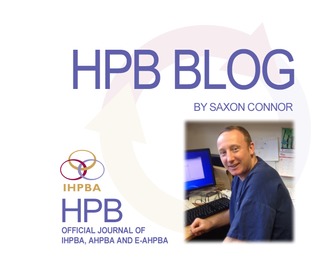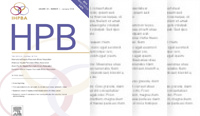International Hepato-Pancreato-Biliary Association
HPB Blog, July 2014

In this July issue of HPB, there are a collection of articles looking at non-technical factors that may help enhance patient recovery following HPB surgery. Although the principles for enhanced recovery after surgery (ERAS) are now well accepted in many surgical disciplines, they have been relatively slow to gain acceptance within the speciality of HPB surgery. Recently, HPB published a paper indicating that less than 25% of major units had introduced enhanced recovery programmes into their perioperative care pathways. At the same time, there has been a major increase in the adoption of minimally invasive techniques for HPB surgery. Yet it is important not to forget that a minimally invasive approach is only one component of the ERAS ethos and, on its own, offers only small gains over open surgery. Therefore optimising non-technical factors will be important if patients are to gain the most from an ERAS approach. In this issue of HPB Wong-Lun-Hing et al, demonstrate the superiority of a continuous bupivacaine infusion via a wound catheter combined with patient controlled analgesia over epidural analgesia for those undergoing hepatic resection. Similarly, for those patients undergoing pancreatic resection the role of early oral feeding in enhancing postoperative recovery is shown by Gerritsen et al. The avoidance of drains has been promoted as a key component of ERAS but this has always been a difficult issue for pancreatic surgeons to grasp. In an effort to try and answer who really requires a drain following a pancreaticoduodenectomy, the group from Glasgow have shown that the use of serum amylase on day zero may allow the early removal of drains by predicting accurately those patients at a low risk of developing a pancreatic fistula. Thus for those who have yet to adopt ERAS principles into their HPB practice, these articles provide some food for thought.
Also, in this issue of HPB, two studies from well respected European HPB centres address important questions with regard to the management of gallbladder cancer. Firstly, from Amsterdam the technical issue of whether the extra-hepatic bile duct should be excised routinely - it would appear not, while the Liverpool group address the importance of early referral for those with incidental or suspicion of gallbladder cancer. Of particular interest was the low incidence of gallbladder cancer in those with suspicious preoperative imaging (7/54), suggesting there is a need for better diagnostic tools if this yield is to be improved.
To view the table of contents of this issue, click here.
Saxon Connor
Corporate Partners
If you are interested in becoming a Corporate Partner of the IHBPA please contact industry@ihpba.org
Find out more


